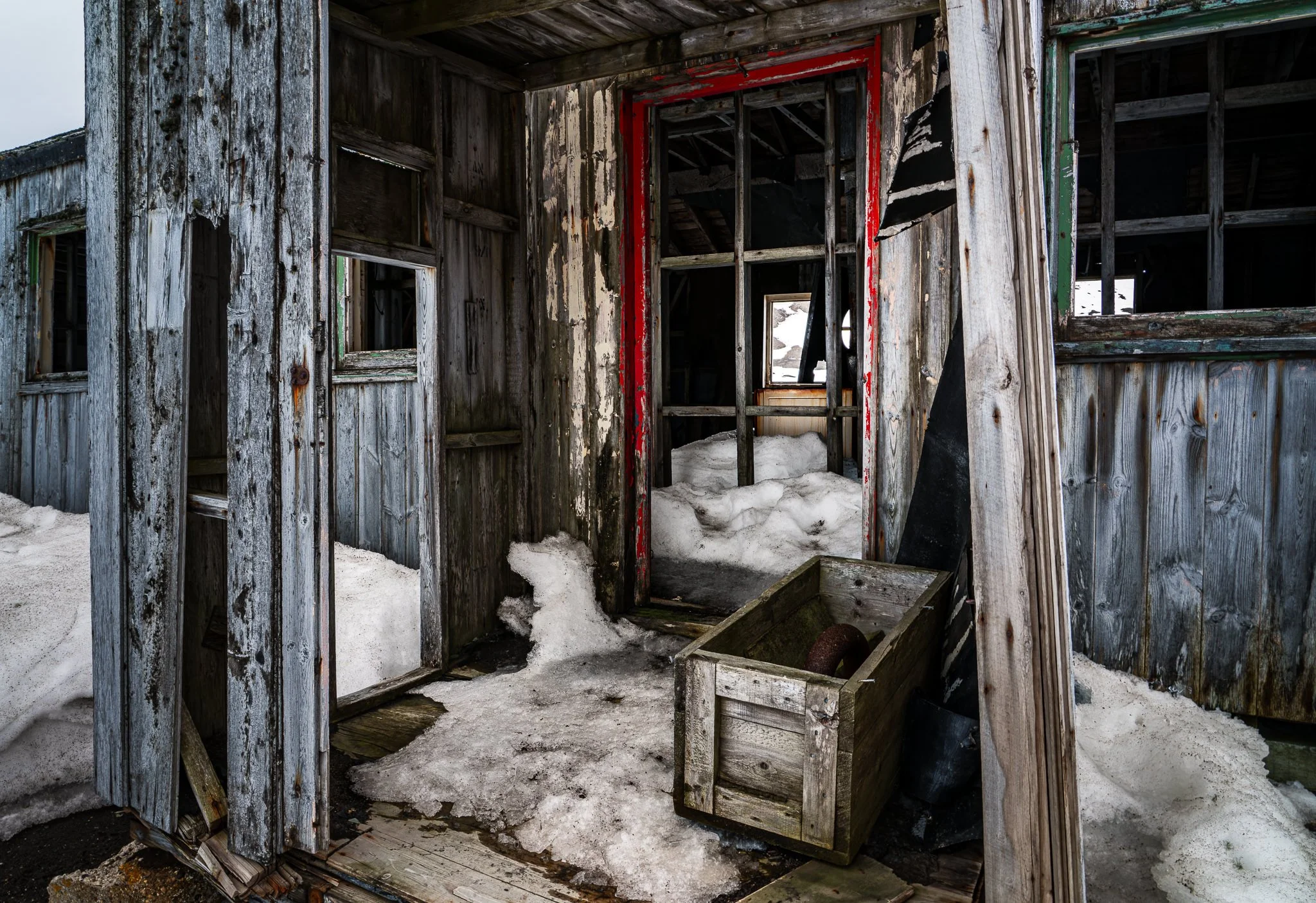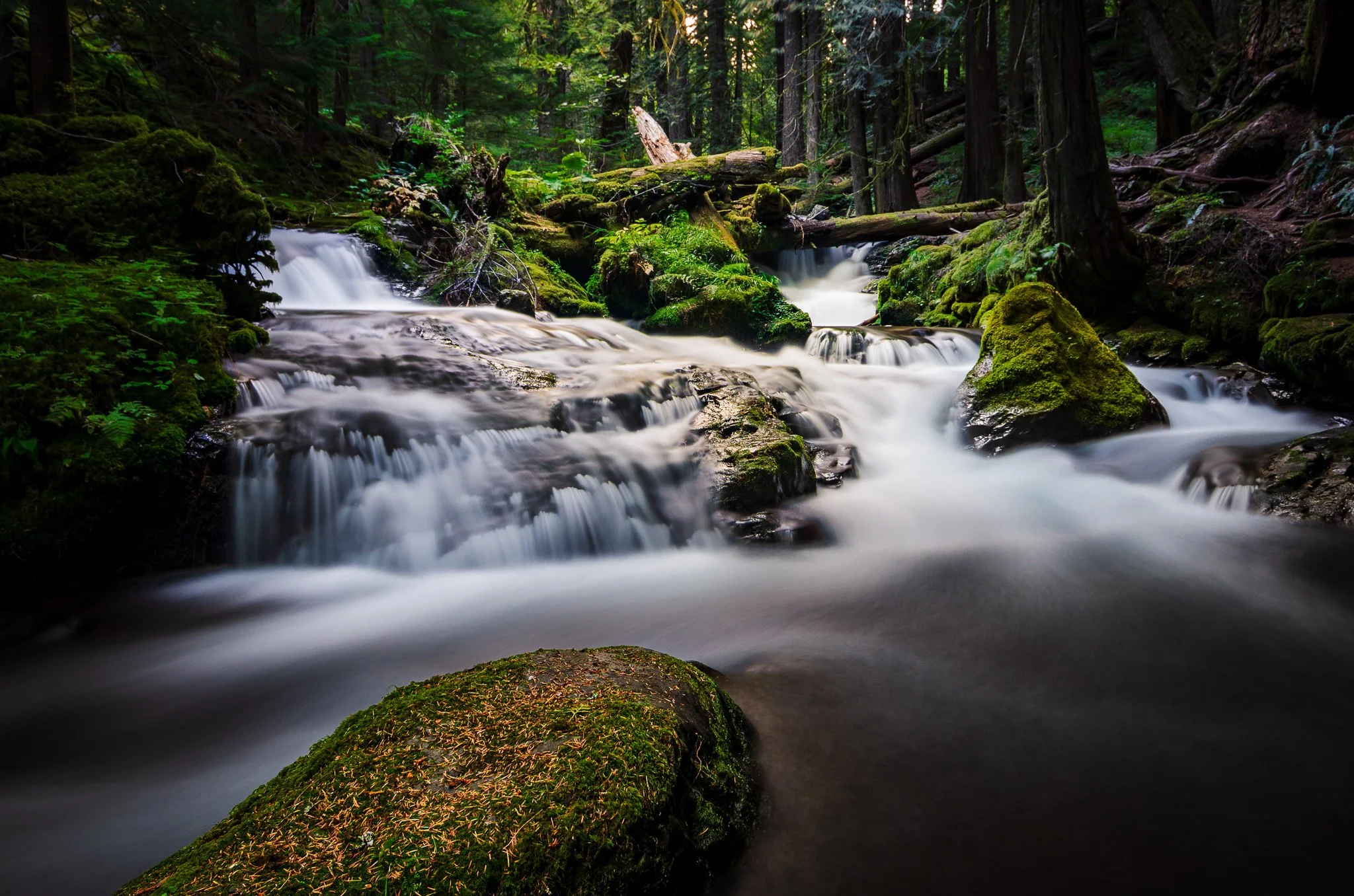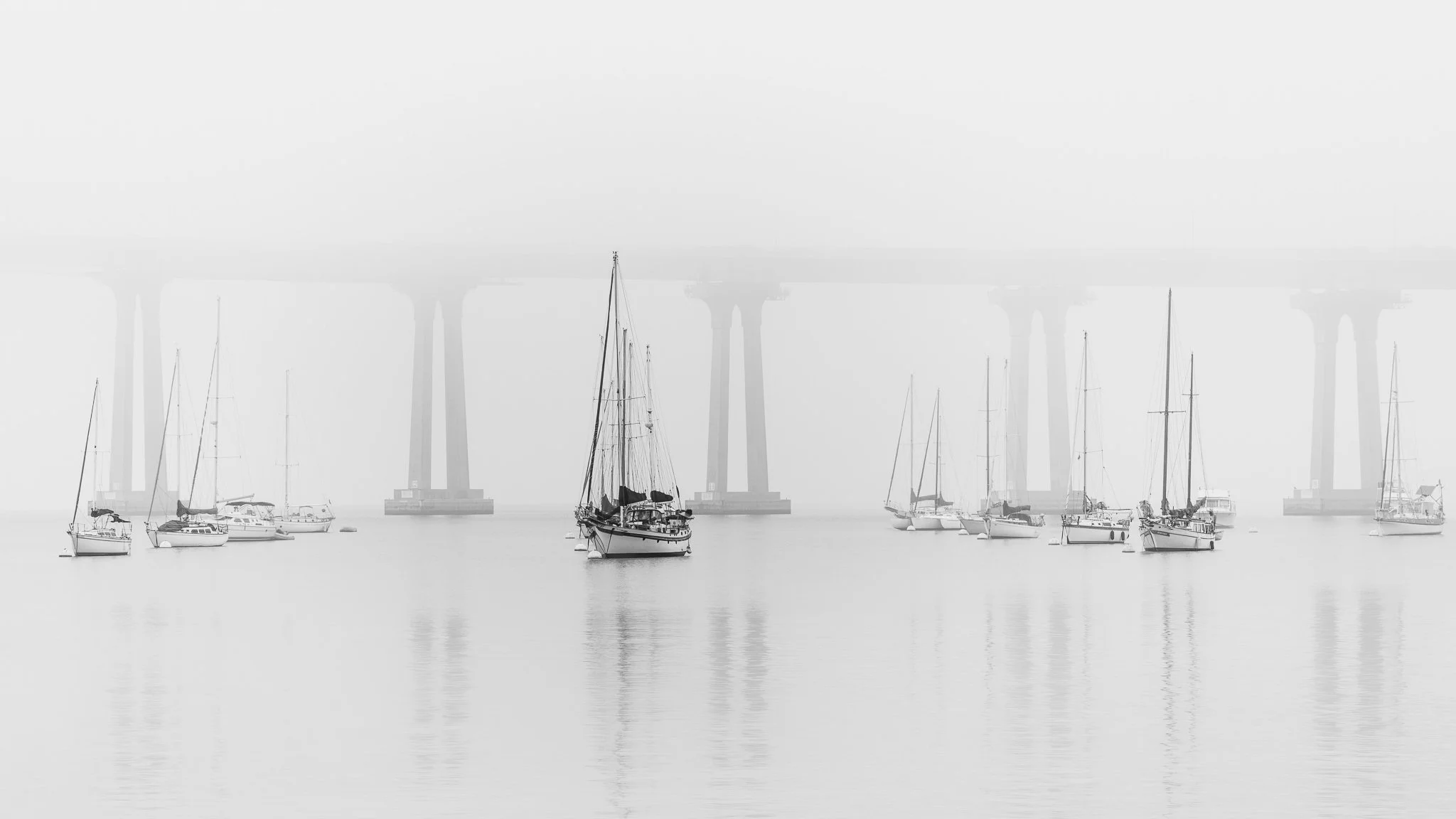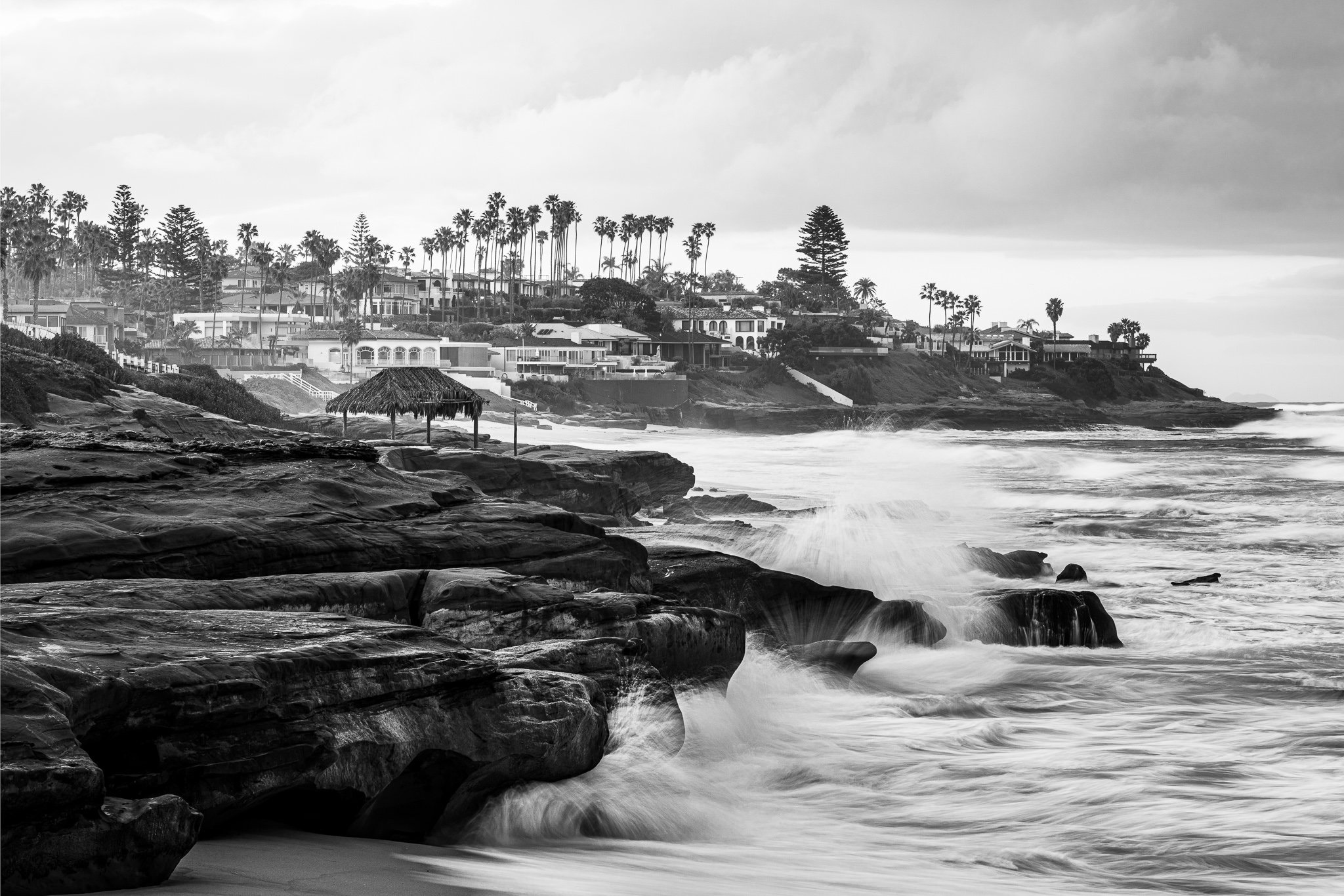How To Improve Your Fog Landscape Photos
If you enjoy posts like this, please support my work and support independent photography tutorials like this.
In recent weeks, Southern California - especially San Diego - has been blanketed in a thick fog in the morning and evening hours. The kind of fog where you can’t see much beyond 100-200 feet in front of you. Along the ocean the fog was especially thick and can be great for photography when you choose the right subjects. You might need to change your compositional approach to foggy landscapes, from “taking it all in” to finding the more intimate landscape or more specialized story of the location. Foggy conditions can both challenge and enhance your photography. In this article, I share two fog photography case studies with composition tips to help you refine your photos of foggy landscapes as well as editing techniques to embrace the moods and tones fog brings to your images.
Case Study 1
Use A Strong Foreground Subject
A thick fog can be discouraging to some photographers. When working in foggy conditions, seek out a strong foreground subject to anchor your photo. Frame your subject to take advantage of how fog obscures the background - sometimes to the extreme where a background is non-existent. In a forest scene, a single tree can stand out from the rows and rows in an otherwise busy forest. The tops of hills or mountains can peek through a canopy, providing a singular focal point for your composition. These are just a taste of the opportunities fog can provide.
Editing Tips
Foggy conditions can produce muted or unappealing color palettes. When color distracts from your subject, turn to black and white. With a strong foreground subject, a black and white treatment will focus your viewer’s attention on the story of the photo. Also, keep your global edits on the gentle side. Fog will naturally diffuse the midground and background of your photo, so use local adjustments to boost contrast and detail on your foreground subject. For distant fog, you can push the luminance of the fog brighter, almost to white, for a higher key look.
The La Jolla Shack
Contact Scott to commission a print or license this image.
Example
At Windansea Beach in La Jolla on a foggy day, the normally wonderful views of the sandstone cliffs in the distance are gone. Switching to focus on “The Shack”, a San Diego local icon, the landscape in the distance is all but gone. The straw-roofed structure is an excellent subject and framed prominently so the story of the photo is the shack. The dusty blue-gray skies and muted yellow beach were not pleasing nor helpful to the image, so a monochrome treatment was an easy choice. Local adjustments emphasized the details and deep shadows in the hut and softened the sand in the foreground. The edits reinforce the subject and the fog naturally softened the rest of the scene.
Case Study 2
Use Layers And Depth
A wonderful thing about photographing in fog is that the fog simplifies the composition. In a forest, rows of trees gently fade into obscurity, creating layers and bringing order to a chaotic scene. Fog can also amplify separation of rolling hills, mountain peaks, or even the sprawl of a modern city. In some locations, fog will hide less photogenic elements of a location, both simplifying your composition and highlighting a more singular story. The layers fog creates adds depth to your image, the elements closer to your camera are crisper and recognizable, while objects in the middle and far distance fade and retreat into the scene. The depth draws your viewer into the frame. Look for these opportunities and refine your composition to accentuate layers (foreground, midground, background) that fog creates.
Editing Tips
Some foggy landscapes can have dramatic color, such as forests or mountainous scenes where richly colored trees punch through the billows of gray and white. Rich colors against the gray or white of fog is a great use of color contrast. When sunbeams pierce through the fog, try auditioning several white balance settings and find level of warmth. To maintain and emphasize layers, add detail and contrast more prominently to the foreground layer. The selective treatment reinforces the layers and strengthens your photo, giving it depth. You can also use color grading to enhance a mood or evoke a feeling in your viewer.
Boats In Fog Beneath The Coronado Bridge
Contact Scott to commission a print or license this image.
Example
One of my favorite photo spots is the San Diego Harbor near the Coronado Bridge. On a clear day, the boats, bridge and land masses behind the bridge are all visible. At blue hour on a clear day, the bridge is a dramatic subject against an inky sky. However, behind the bridge is a healthy amount of industry - typical of a working port - though less photogenic than the bridge architecture. On a foggy day, the background is obscured and even the bridge is only partially visible, yielding a very different story much more about the boats anchored nearby the bridge.
The photo below was taken a little after sunrise - although you might never guess that given how foggy it is. The sunlight added a slightly warmer color caste to the brighter areas, while the water remained cooler. Auditioning several white balance settings landed me with a good balance of warm versus cool. I also used color grading to lean into the serene feeling of the morning. I used tones of blue in the shadows and midtones and a light shade of yellow/tan for the highlights, drawing inspiration from a “nautical themed” color palette. I also emphasized a few boats closest to the camera with local detail, leaving the water, bridge and background soft, maintaining the natural layers made by the fog.
Conclusion
Foggy conditions present a unique photographic opportunity to create moody, atmospheric images that capture the ethereal beauty of misty environments. A familiar scene can transform into a different world when fog obscures large areas of the landscape. Embrace the way fog changes how you compose your scenes and what subjects you emphasize. You’ll also have freedom to explore different editing techniques where hyper-sharpness throughout the landscape is unnecessary and in fact counter to the unique looks fog gives your photos.
Have fun!










